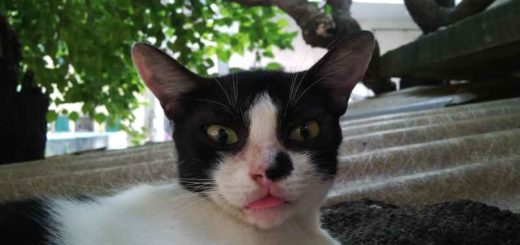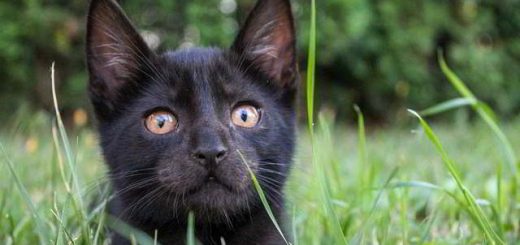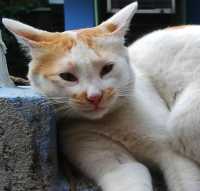Problems with Silica Cat Litter | Revised & Updated March 2023

Is silica cat litter safe? When this article was originally written (2011), our research indicated that it wasn’t. We cited references from peer reviewed studies and user review that cat litter with crystalline silica was hazardous for both humans and cats (and that still holds true). You can also check the comment section of this article to see exactly how unsafe it has been for actual users.
In recent years, however, we’ve had comments that indicate all silica cat litter may not be created from the harmful variety, after all. We researched some more and here’s what we found:
Synthetic Amorphous Silica (SAS), commonly known simply as Silica Gel, is not harmful for either humans or cats. Moreover, it should mix very well with the soil layer because it is similar to the inorganic constituents of soil. So, it is eco-friendly, as well. This synthetic form of silicon dioxide derived from sodium silicate was patented by Professor Walter A. Patrick in 1918.
Respirable Crystalline Silica (RCS) is harmful in many ways for animals and humans and may have infected more than 200,000 people in the US alone.
Synthetic Amorphous Silica Gel Cat Litter
In Comparison of Disease Risks Between Amorphous and Crystalline Silica by Greer, M A; Goldsmith, D F concludes: “Despite increased activation of inflammatory enzymes, it seems as though amorphous silica or nanosized glass exposure does not lead to pulmonary fibrosis or lung cancer.” [Source]
And here is a more detailed examination of Synthetic Amorphous Silica and Silicates that should prove reassuring:
- SAS is ‘rapidly eliminated from the lung tissue during and after prolonged inhalation exposure’ without significant adverse effects while ‘crystalline forms exhibit a marked tendency to accumulate and persist in the lung and lymph nodes.
- As far as affecting the intestines in case SAS is accidentally eaten, there is no significant absorption. This explains why the most severe side effects of ingesting silica gel are vomiting and diarrhea. The body simply gets rid of the foreign material in a hurry when there’s too much of it.
- Amorphous silica gel does not irritate either skin or the eyes.
- Inhalation even in copious amounts does kill.
- Inhaling amorphous silica over even a thirteen-week period produced only inflammation in the lung tissue but no irreversible damage. The inflammation went away when the subjects were no longer exposed to SAS.
- Long term exposure to silica gel was not found to cause pneumoconiosis, silicosis or fibrosis.
- The probability that silica gel can cause cancer is negligible.
- It mixes with the soil as it is similar to inorganic soil matter; the concept of biodegradability does not apply to substances that are inorganic to begin with.
You can click here to read the paper online as also save the pdf.
So, Is Silica Cat Litter Safe?
Yes, as long as it is made from amorphous silica. If you’re interested in buying silica gel cat litter for its odor control and clumping properties, please check the manufacturer’s website to be certain that it is not made from crystalline silica. Additionally, it is important to read user reviews (if any) because even without toxicity, dust can always be an annoyance. It is best to go for a cat litter that has minimal dust.
Based on the comments from our readers, and from what we have seen on the official website, the only silica cat litter we’d recommend at this point would be Pretty Litter. It has a proprietary substance that can indicate whether a cat’s urine is healthy or not. An early diagnosis of, say, kidney problems, can prove very useful in saving your pet. You can read Pretty Litter FAQ here.
What exactly is Silica Crystal Cat Litter?
Silica crystals are filled with millions of micro pores that adsorb moisture. Silicon dioxide (the type of sand found in quartz), when mixed with oxygen and water, turns into Silica Crystals. The crystals are super adsorbent and suck the moisture out of kitty poo. No wonder it is so popular amongst cat owners.
AN APPEAL TO OUR READERS:
EMPATHY has rescued and sheltered more than a hundred cats and dogs since 2002.
ADsorb vs ABsorb
A substance is adsorbent when other substances (dissolved solid/liquid/gas) stick to its surface (or adhere to it) at a molecular level.
Other than silica gel, activated charcoal is a good example.
Even though silica gel is extremely porous at a microscopic level, the liquid (which includes dissolved solids) part of cat excrement just forms a film on the surface of the pores instead of being sucked inside of them (and sort of becoming a part of them).
A substance is absorbent when other substances (liquids) are dissolved in it or can permeate it.
Example of dissolve: ink being dissolved in water.
Example of permeate: ink being soaked up by blotting paper.
Clumping cat litter (with or without sodium bentonite) will absorb the fluid from cat excrement and form a solid clump of varying degrees of hardness.
Sodium Bentonite is not the only cat litter culprit. Clay is harmful if inhaled in dust form. Apart from that, in clay based clump cat litter, silicon constitutes most of the dust particles. That is not a healthy situation for either the human members of the household or the one with the paws using the litter. 
The possible carcinogenic (causing cancer) property of silica, and the disease Silicosis should not be taken lightly, either (although silicosis is suspected to occur from dust that comes of natural silica).
The blue color often found in silica gel cat litters that indicates that the litter is fresh (it turns pink upon absorption of moisture) is due to the presence of Cobalt Chloride. This, again, is ‘possibly carcinogenic’ to humans and definitely hazardous to aquatic life and to the environment in general (use of Cobalt Chloride has been restricted in Europe since 2000 after being reclassified as a carcinogen).
Related: Get the best of both worlds with Flushable Cat Litter made from natural resources (updated March 2023)

Is crystalline silica cat litter safe for cats and humans?
Excerpts from THREE different sources ought to illustrate exactly how harmless it really is as cat litter.
We move from the least to the most alarming of the three instances.
1. Comment in a Forum:
We have been using “crystal” cat litter that is a silica gel for several months. It is far and away the best litter we’ve tried in terms of odor control and ease of use.
However, there is a tremendous amount of dust emanating from the stuff. It is so heavy, I fill the box by taking it outside, holding the bag several feet above the box, and pouring slowly so the dust blows off in the breeze. I hold my breath too. If by chance I breathe it, intense coughing is the result.
I’ve also noticed a few times, that when the box is fresh, the cat will leave the box and wheeze a few times
2.Excerpt From a Case Study on Silica in Cat Litter and Its Effect on Cats:
Inhaled silica dust has been implicated as a cause of lung cancer and other respiratory diseases in humans and several animal species.
Electron microscopy and x-ray spectroscopy were used to identify and characterize dust particles from seven brands of commercially available clay cat litters and to identify, characterize and quantify particles in the lung wash fluid of six cats with and six cats without signs of respiratory disease.
Dust particles from clay cat litter have an identifiable appearance and elemental ratio (primarily aluminum and silica) and the same pattern was observed in particles obtained from lung wash fluid. Significantly more silica particles were obtained from cats with than without respiratory disease.
This suggests an association between presence of silica particles and respiratory disease, but it is unknown whether silica dust particles contribute to respiratory disease or accumulate because of interference with normal lung ciliary function.
3. Sarcoidosis and Silica Cat Litter – The Shocking Connection
What on earth is Sarcoidosis?

Image courtesy: http://blog.mallinckrodt.com/mallinckrodt-supports-sarcoidosis-awareness-campaign/
Click for larger image.
Sarcoidosis (SAR-KOI-DOSIS) is a disease caused when the body’s immune system overreacts. While it is not yet known exactly what causes the overreaction
While it is not yet known exactly what causes the overreaction there is reason to believe that it may be triggered by a response to some specific substance inhaled from the air (like dust from silica cat litter, perhaps?).
The most visible symptom is the formation of granulomas which appear as unnatural lumps or nodules. These are caused by inflamed cells clumping together. Most frequently affected organs are the lungs and the lymph nodes but other organs may be affected as well.
Good news is, Sarcoidosis has been known to go away on its own and with supportive medication patients can live a close to normal life.
Unfortunately, there is no known cure for Sarcoidosis. If it takes an aggressive turn, the granulomas can cause irreversible damage to the affected organs.
There are about 200,000 individuals affected by Sarcoidosis in the US.
- Unexplained shortness of breath
- Swelling and pain at joints and extremities
- Unnatural or missed heart beats (arrhythmias)
- Hearing loss
- Seizures
- Blurry vision and symptoms like conjunctivitis
- Tender bumps and patches on the skin
- Psychiatric disorders like dementia and psychosis or even general depression
Sources: WebMD, Mayo Clinic
Here is a video to round off this part of the discussion. We suggest you skip it for now and scroll down to read what is arguably more important for you if you’ve been using silica gel cat litter.
(Silica) ‘Cat litter is a possible trigger for sarcoidosis’
Excerpts from study published in the European Respiratory Journal, December 31, 2011
Inorganic agents, including silica, have been reported to initiate inflammation and granulomatous reactions… We propose that silica, the major component of cat litter, might be such an agent.
We report a case of biopsy-proven sarcoidosis with birefringent material, mainly silica, within the lung biopsy specimen. The patient had no relevant occupational history, but had cats and was extensively exposed to silica-containing cat litter.
Initially, the patient improved after starting immunosuppressive drugs and terminating contact with litter. However, she deteriorated twice after autoprovocation (re-exposure) to cat litter. After changing the silica-containing cat litter for litter without silica, her clinical condition improved substantially.
Obviously, she appeared to be “hypersensitive” not to the cats but to the cat litter.
and
Although crystalline silica exposure has been known to be associated with sarcoidosis, the present case provides evidence of an unexpected association between the substantial exposure to silica-containing cat litter and sarcoidosis or a “sarcoid-like” granulomatous reaction.
Obviously, this is important, as many people have cats with litter boxes.
Therefore, it was recommended not to get rid of the cats but rather choose appropriate cat litter, without silica.
This case stresses: “if you are not aware of it, you will not recognise it!”
You should probably read the entire article.
There is a growing resentment among patients of Sarcoidosis that since the number of people affected is relatively low, there hasn’t been much research on determining a cure.
The theory (which makes sense, actually) is that Big Pharma funds most such research works and it wouldn’t make sense to fund a research that might serve to bring relief to a small number of people. The investment simply wouldn’t be worth it.
Be that as it may, one cannot help but wonder what might turn up if more studies like the one cited above were conducted.
Related:
Are you killing sea otters with used litter?










I just bought a bag of the Pretty Litter because of the health indicators they claim it has but my cat is long haired so what I plan to do is to just use it for a monthly check up…Ill pour just a smaill amount in her box 1 time a month and soon as she uses it, Ill check the color to make sure its normal and then Ill go back and fill her pan with her regular non clumping liter….
I USED A SILICA CRYSTALS CAT LITTER….. IT STICKS TO MOISTURE…. IT GOT STUCK BETWEEN MY KITTIES`S TOES…. IT HURT SO SHE TRIED TO GET IT OUT WITH HER MOUTH…HER MOUTH WAS WET IT STUCK AND THEN GOT STUCK IN HER WET THROAT,,,,, SHE COUGHED LIKE GAGGING AND I`M SURE SHE WAS…..I TOOK HER TO THE VET ,ANIMAL HUMANE SOCIETY AND THEY SAID IT WAS TO NEW ON THE MARKET TO REALLY KNOW…ITS BEEN 2 MONTHS NOW, YES SHE IS STILL ALIVE , BUT DOES NOT BREATHE THE SAME. SHE HAS NOW LIKE A RUMBLE. I THREW ALL THE LITTER AND BOX AWAY I THINK IF I HADN`T SHE WOULD HAVE DIED. I`M NO EXPERT I JUST LOVE MY CAT AND I WOULD TELL EVERYONE NOT TO USE IT….JUST THINK ABOUT IT ,,,,SUPER ABSORBRENT STICKS TO ANYTHING WET AND WHAT DO CATS CLEAN THEMSELVES WITH,,,,THEIR WET MOUTH!
I agree with you I started using this litter two days ago and my cat was fine and today my cat died . I know it was this litter it was the only thing I used different . This litter is toxic . Funny they say it can harm a human but not an animal ~ animals and people are LIVING creatures. I wish I never bought this I’m so devastated losing my cat .
You’re spreading misinformation, the silica used for cat litters…is no different to the silica packets used in food packaging, it is NOT the same crystalline form of silica that causes respiratory illnesses.
…yes, dust is not good for your lungs in general, neither is smoke.
But that is any dust, or any smoke.
Clay cat litter dust would be worse for your cat, than silica litter…in terms of possibly respiratory illness.
…but all litters tend to produce some amount of dust, even “eco-friendly” varieties.
Cedar produces not only dust, but also oils that can be problematic.
…I’ve tried every cat litter type so far, at the moment Pretty Litter is working out.
It’s expensive though at $20 a bag.
…but if you buy it in bulk, it’s far cheaper, I buy 24 bags at a time for less than $300.
So I get like 10 bags free that way.
I will be trying something else soon (Pine horse bedding), that is much cheaper…but the mess will be something I’ll experiment with.
…also cleaning it will only last maybe three days, before I’ll just dump the whole box likely.
I am trying to find the very best litter for long haired cats, as I have two Russian Siberians…litter tends to stick to their fur and paws a lot.
Curious if anyone here has tried PrettyLitter.com. They claim it’s cheaper than flushable/avg litter and has these colour change health indicators that can tell you if your cat has kidney or urinary issues. My cat is 14 this year and starting to slow down and was hoping to give this a try. I was intrigued by the health indicators and the subscription, but reading this article makes me worry… it sounds like this is ‘amorphous silica’ so it should be safe? Any thoughts?
They also claim:
>PrettyLitter is made of super absorbent Silica Gel, combined with a proprietary formulation of indicators to help you monitor your cat’s urine for acidity and alkalinity levels outside the average range, plus the visible presence of blood. Silica gel, or Synthetic Amorphous Silica (SAS) is a form of silica that has been widely used in topical and oral medicines, food and cosmetics for decades. PrettyLitter is manufactured in one of the world’s largest and most trusted kitty litter plants sourcing its own silica microgels using carefully selected mineral sources. In addition, our manufacturing facility uses the highest quality control standards.
Why is cancer causing chemicals is in this litter. You have so many people dying of cancer everyday including animals. This is wrong, why are our nation doing this to us and our pets?
Is it safe to put use porous silica sand (cat litter) in a low spot under your mobile home where mosquitoes tend to raise❓❓ if so is it safe around Birds including chickens ducks and geese??
Sorry about the late approval of your comment – it is unusual, which is probably why my security plugin thought it was spam. I had to retrieve it manually.
About your query, silica gel is harmful in its dust form when it gets inside the body via the respiratory tract. I have just been on a couple of chicken forums, if your chicken ingest the pellets, there should be no cause for alarm.
I could not find anything about silica gel and ducks and geese, I’m afraid.
But the real problem is that if you want to use silica gel as an insect repellant, you must use the dust – it works like diatomaceous earth and dehydrates the insects to death. And, like I said, silica gel poses the greatest risk in the dust form.
So, I wouldn’t be using it under the mobile home if I were you and had chicken, ducks and geese walking around.
SIlica in crystalline form—such as you may find in sand or clay—is very difficult to dissolve. It can be kind of like asbestos in that if it’s stuck somewhere it may stay that way forever. Think about it like a net of wiring that’s welded together wherever wires cross. Brushing, pulling, or pouring water over it does nothing: it stays in one piece. Embedding something like that in your lungs is very bad.
Silica in amorphous form doesn’t work the same way. It’s more like a…well, a powder. Brush it, pull it, pour water on it, and it comes apart. You’re conflating the two when you reference studies using clay litter.
In amorphous form, such as in silica gel (“crystal” cat litter is not crystals), silica is not persistent. Fiberglass fnsulation, for example, uses amorphous silica bound in a resin. While excessive exposure to any dust is definitely, definitely going to do some damage, nominal exposure to dust from fiberglass insulation causes your body to…absorb the silica through your lungs and use it as a nutrient to build bones. Seriously. This may be a risk to professional installers (lots of exposure), but it’s medium-term harmless to someone who just ran their own insulation project for their house. (Short-term it’s an irritant) It’s still a good idea to wear proper safety gear.
Insects are small and there isn’t much water to remove from them. Dehydrating a large animal is hard.
The silica gel I use is pretty low-dust. I’ve seen stuff that puffs out smoke when first poured. I cycle it once or twice in my automated litter box just to be sure, but the new stuff I have is a specific respiratory health silica litter that has much less dust than what I used previously.
Also I have a degree in policy analysis, which centers around research; I suggest you look a little more closely when you use one type of study to make inferences about something else. Again, clay litters often contain silica in crystalline form (and clay is in general made of silica compounds); silica litters contain amorphous silica (crystalline silica just won’t work despite the bs marketing). The studies are about unrelated things.
Hi, I have a question that confusingly may have been spoken to in the article. I craft Melt and pour soaps (MP). they attract a great deal of moisture. As such an absorbent is helpful while drying the product prior to packaging. I tend to use a bunch of paper towels but sometimes that is simply not enough especially when I make a lot of soap in one day. 1 bar no problem. 100 bars, lots of moisture being attracted. I priced the desiccant packets on ebay and amazon and they are not cheep. I saw an article where a guy filled a sock with crystal littler and put it inside his car to keep the moisture from affecting his windows so I thought maybe that would help keep dew away from the soap. but, Is it skin safe for humans? Is there another brand or means to an end that would work better? This is something I am passionate about. I want to present a product that is useful but also one safe for those who purchase it.That is the soap, kept dry by crystal cat litter. In a cloth to prevent it from direct contact.
Hi Raymond,
I am not an expert on silica crystals per se .. but I have never heard of anyone using the crystals directly on their skin either. With what we know of silica, I wouldn’t be very optimistic, really. But you should probably seek expert advice (including legal advice) if you are going into business.
Comment moved manually from old site
Skyler (****@outlook.com) says on 2016/07/05 at 11:34 pm:
I don’t know if I like it or not. It scares me a little to be honest. I just got my kitten and everytime she goes in she ends up eating them. I end up taking it out of his mouth. Is it ok? Is it bad for my cat? What should I do about my cat eating it?
Comment manually moved from old site:
Stephanie Moon (****@gmail.com) says on 2016/04/27 at 12:05 am
Brilliant discovery!
Use horse or chicken pellets, they are super cheap 15$ 20kilo bag , bio degradeable and the cats love using them. I am a recent convert from the silica.
Omg..thank you so much for this tip..I rescue..cats (25)..
I don’t use the crystal litter but the clay clump and use a mask when I scoop.but the dust is still in the air and on my walls..so I know I’m inhaling a lot of toxins,perfume ‘s and dust…
Comment manually moved from old site:
Beth (******@mailinator.com) says on 2016/01/15 at 11:56 pm:
I am currently using Ultra Pet silica litter (the very fine one, the one that looks like sand). I have been using it for several months. While my cats LOVE it, even with daily vacuuming of the floors, every surface in the room with the litter box, including books, desk, computer, etc. is covered with a layer of silica dust. I can SMELL silica dust in the room when I am in there. I have no choice but to look for some alternative litter at this point as it is truly disgusting and I go into that room as little as possible except to stir the litter per directions and clean the box per directions. I am very unhappy (although my cats are happy) with this litter and do not recommend it.
Thanks for adding to the discussion, everyone… will be coming up with something new shortly, would welcome your comments again.
This is research by a journal. http://www.elcosh.org/document/1426/664/d000803/1.html
“Occupational exposure associated with respiratory diseases
Silicosis (chronic, accelerated, acute)
Progressive pulmonary fibrosis
Chronic obstructive pulmonary diseases
Lung cancer
Increased risk for TB
Occupational exposure associated with other diseases
Systemic autoimmune diseases
Rheumatoid arthritis, SLE, scleroderma, small vessel vasculitides
Renal Disease
Glomerulonephritis, nephrotic syndrome, end-stage renal disease
“
Comment manually moved from old site:
In reply to Monica, El Bee (*****@gmail.com) says:
Monica, the silica (“silica GEL”) in cat litter is NOT, contrary to the name of the products, crystalline silica; it would not pass federal regulations to sell in the USA, anyway! Silica gel is the harmless stuff that keeps shoes from getting moldy when stored or shipped. It’s in almost all grains, both “whole” and processed, and most processed foods contain it. What you’re talking about isn’t remotely similar and can’t even FORM this shape–the MOLECULES are “crystalline” in appearance, but it’s NOT the same silica. If silica gel were fatal, so would going to the beach and eating anything you didn’t farm yourself.
The walmart “mimi” brand crystal cat litter gave my daughters Russian Blue long-hair cat a severe UTI to the point of bleeding. I’m convinced Cheri would have died had I not changed the litter to “Special Kitty” 100% natural clay (non-clumping brand). Within 24-36 hours of changing the litter, she totally stopped bleeding as well as frequent urination and returned to her normal self. Crystal litter may be easier for cat owners, but my experience says it’s possibly fatal to the kitties having to use it.
Comment manually moved from old site:
In reply to Rebecca, Kaibeezy says on 2016/04/08 at 10:48 am
White silica gel cat litter saved my cat’s life. I noticed one day her urine was very slightly pink. The vet saw her that day and diagnosed a hidden kidney condition that would have killed her quickly, but because we caught it so early, she lived happy and healthy for many more years. I never would have seen the stain in anything but the pure white silica litter. That’s a real and significant benefit that far outweighs any marginal, mythical, pseudo-scientific “danger”.
You are correct that crystalline silica can be cause problems like silicosis, but you are mistaken in thinking that silica gel cat litter is the same, it is not, there is crystalline silica naturally occurring in a lot of clays and therefore it can be in clay litters though. The silica gel is amorphous silica, the silica in clays is crystalline and that causes health problems, aka potter’s rot, quarry lung, medically known as silicosis. Breathing in lots of any dust is not good. But the science just isn’t there to to support that amorphous silica is as bad as crystalline silica. Diatomaceous earth is basically amorphous silica-yes it can kill some insects by dessication same thing it does to poop and pee and those little silica packs in vitamins. Synthetic amorphous silica is in cat litter, rubber, epoxies, agroproducts, in human food, pet food. Too much of anything can kill you. Even pure water can be toxic if you drink too much. Flour can cause lung problems similarish to silicosis, it is called baker’s lung. The issue is degree of exposure. If the dust bothers you then wear a face mask when pouring, that is the time you and your cat will be most exposed. It is unfortunate that so many manufacturers call it crystals, because technically that is wrong. It is not crystalline, the crystal is not absorbent, otherwise your glass windows wouldn’t keep out the rain or the beach would soak up the ocean! Perhaps the bigger health concern is it pure? Amorphous silica can be contaminated by crystalline silica and that would be a hazard.
I need to know something about you!